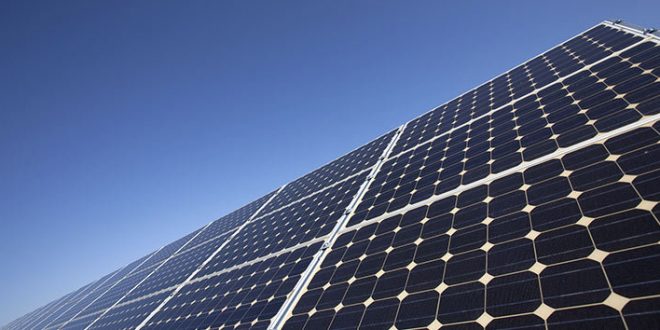Kazakhstan took another step toward strengthening its energy security this week after Eni, an Italian multinational oil and gas company, launched the construction of a new solar farm in Otrar, Turkestan, Kazakhstan’s southern region.
The project to construct the 50 MW photovoltaic plant is being implemented by a joint Italian-Kazakh venture, Arm Wind LLP, and with the support of Kazakh Invest national company.
“In the Turkestan region, we are starting a new project — the construction of a solar power plant. The presence of a large number of sunny days in the Otrar region will allow us to produce a sufficient amount of electricity here,” said Alex Stilovato, Managing Director of Arm Wind LLP, while addressing the launch ceremony held on March 10.
According to a statement issued by Eni, the plant will cover an area of 100 hectares (247 acres), where more than 100,000 panels and a new electrical substation will be installed. The equipment will be connected to the local grid via a new overhead power line with a length of around 7 kilometers.
Once launched, the plant will generate 90 million kWh of electricity per year, which will cover 2 percent of the electricity deficit in the Turkestan region, according to Kazakh Invest data. The construction is planned to be completed by the end of the year. The volume of investments in the region as part of the construction of the solar farm will reportedly exceed 12.5 billion tenges ($27.9 million), and about 200 new jobs will be created.
The project is also expected to help reduce greenhouse gas emissions by about 1.2 million tons of CO2 equivalent over the plant’s lifetime. Officials from Eni believe this will contribute to the decarbonization of the power sector of Kazakhstan and support the country’s ambitious goal to generate 50 percent of its electricity from renewables by 2050.
“We fully support the policy of Kazakhstan on the transition to renewable energy sources,” Stilovato said.
Kazakhstan’s population is almost 19 million – high for Central Asia, but globally low. Under the Kyoto Protocol, which went into effect in 2009, Kazakhstan vowed to reduce its carbon emissions by 15 percent by 2020 and up to 30 percent by 2050. The country is committed to switching to a green economy, despite vast fossil fuel reserves, and is determined to generate 10 percent of its electricity from renewables by 2030; and at least half by mid-century.
According to data compiled by the country’s energy ministry, Kazakhstan produced 108 billion kilowatt-hours (kWh) of electricity in 2020, of which 3.24 billion were generated from renewables. By late 2020, the installed capacity of clean energy facilities in Kazakhstan amounted to 1,635 MW.
Eni has been awarded the photovoltaic project in southern Kazakhstan in 2019 following an auction managed by the government of the country. The initiative marks Eni’s first large-scale investment in solar power in Kazakhstan, but the project, however, will not be a first for Eni in Kazakhstan.
The Italian company has been involved in the Central Asian country since 1992 and is an equity partner in various projects in the Northern Caspian Sea, including the giant Kashagan field. In 2018, Eni became a joint operator in the exploration block Isatay and Abay, with the state-owned KazMunayGas.
Last year, Eni launched its first renewable energy project in Kazakhstan. The wind power plant in Aktobe, Kazakhstan’s western region, is called Badamsha and is equipped with environmentally friendly and modern technologies. Badamsha has a capacity of 48 megawatts (MW) and consists of 13 wind turbines that convert the wind’s kinetic energy into electrical energy.

 Iran Energy News Oil, Gas, Petrochemical and Energy Field Specialized Channel
Iran Energy News Oil, Gas, Petrochemical and Energy Field Specialized Channel



